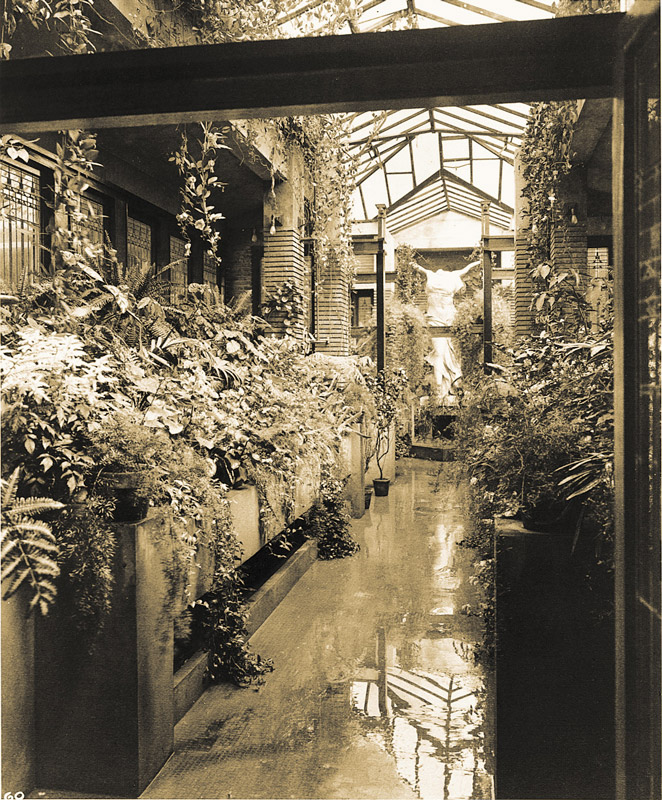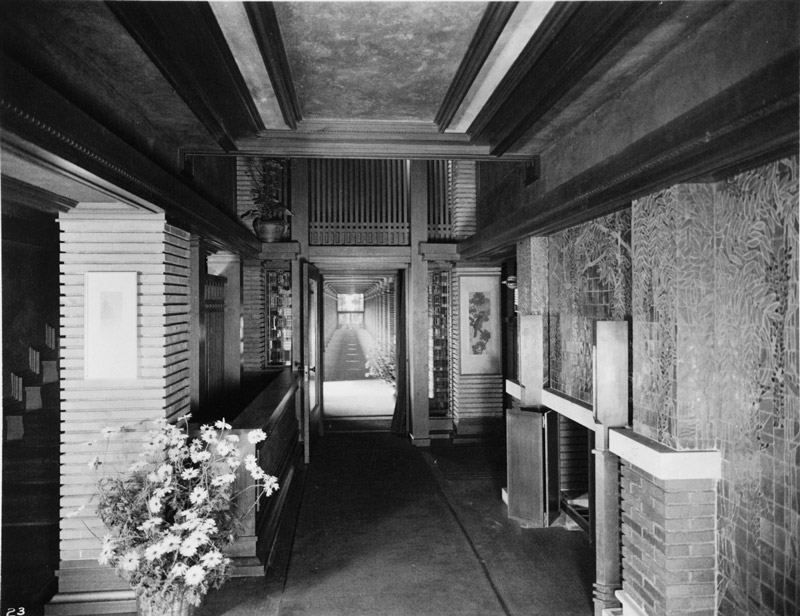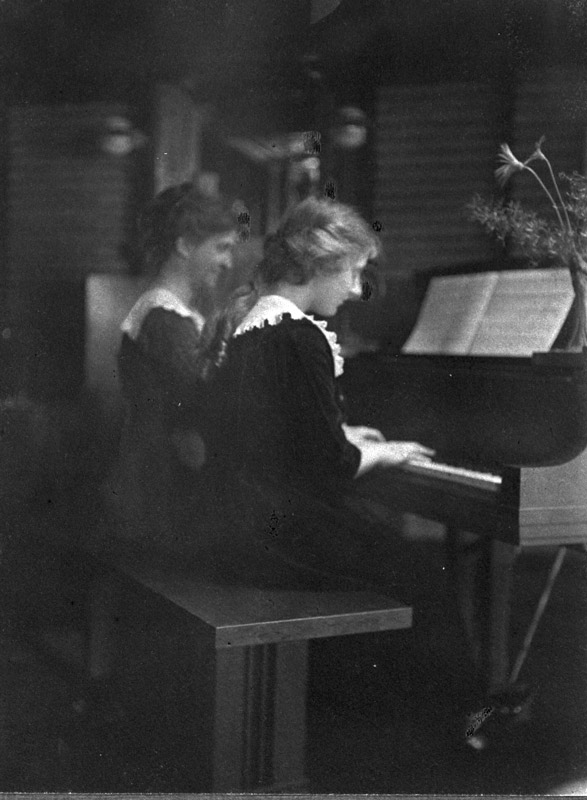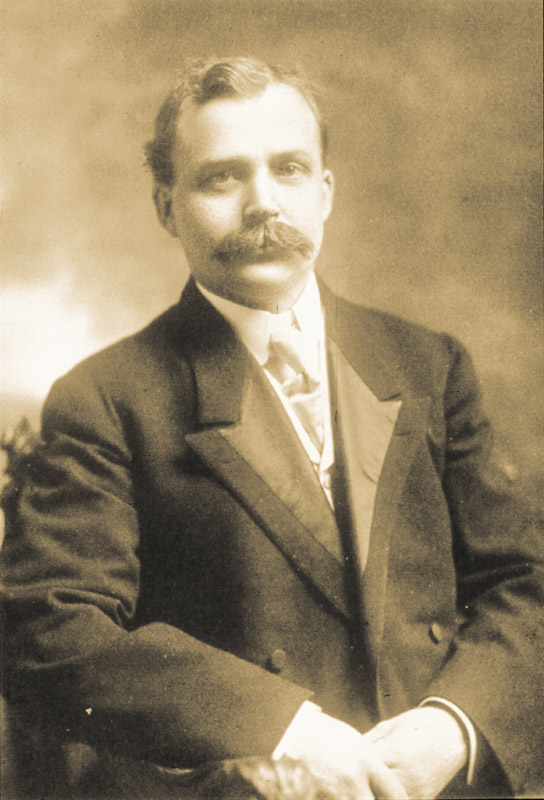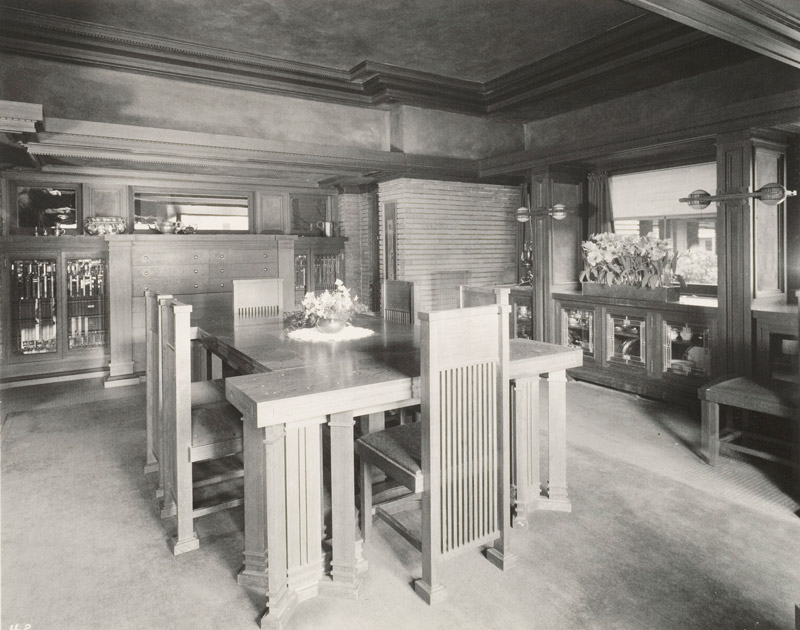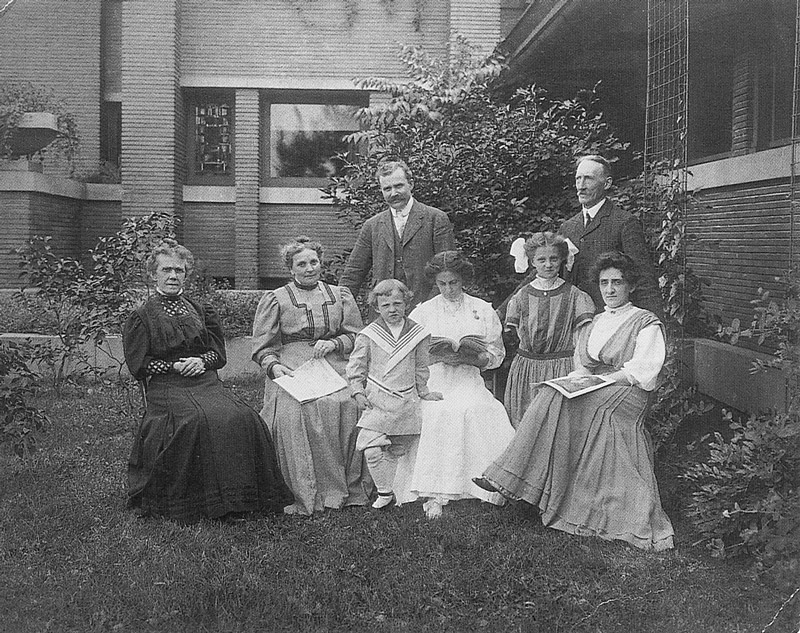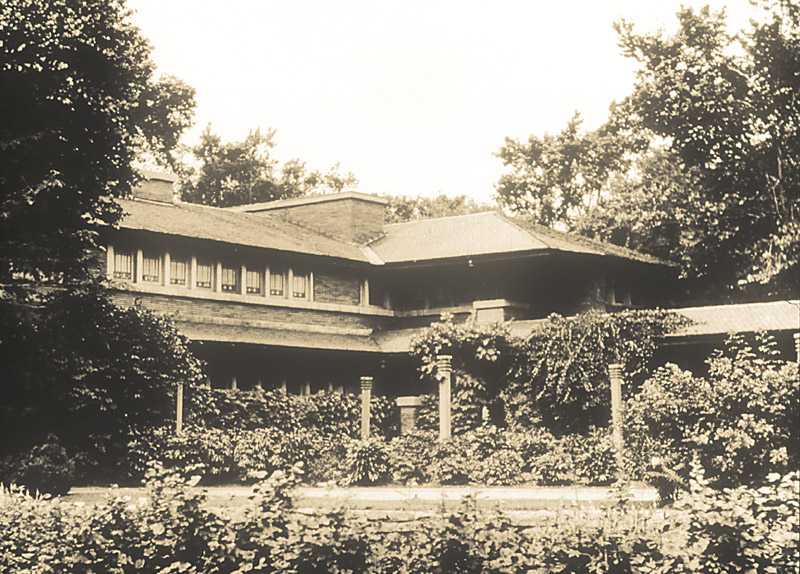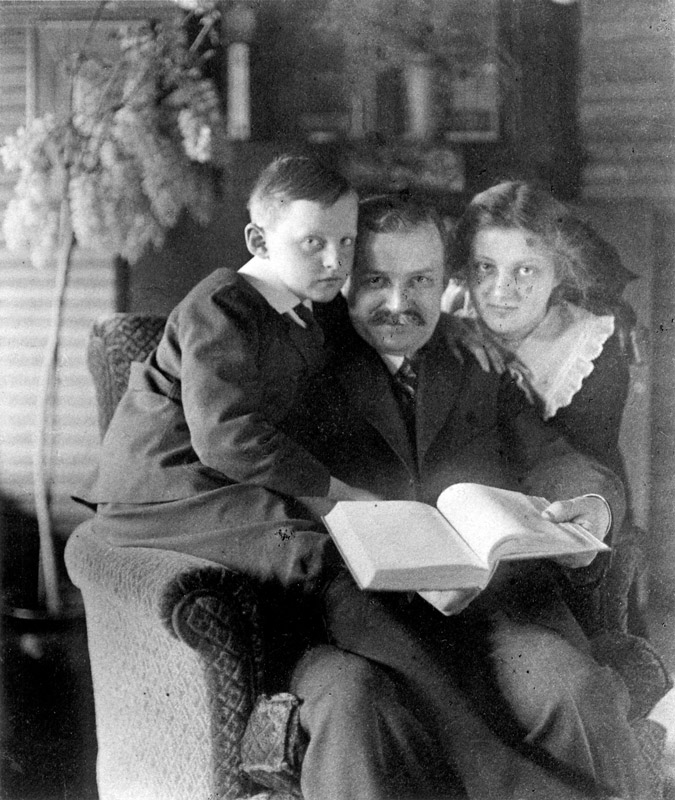Travel through time as we recognize the important moments in Martin House history.
1865
Darwin D. Martin is born in Bouckville, New York.
1867
Frank Lloyd Wright is born in Richland Center, Wisconsin.
1879
Martin moves to Buffalo at the age of 13 and works for the Larkin Soap Company.
1901
Wright promotes his concept of the Prairie house in an article entitled “A Home in a Prairie Town,” Ladies’ Home Journal, February 1901.
1902
Wright visits Buffalo at the request of Martin to discuss commissions for Barton House, as well as the Larkin Administration Building. In December, Martin acquires the Jewett Avenue property for the future Martin House estate.
1903
Work on the estate begins with Barton House.
1904-05
Construction begins on the main Martin House, pergola, conservatory, and carriage house.
1904-06
The Larkin Administration Building, Wright’s first major commercial commission, is constructed. It is later demolished in 1950.
1907
Wright declares the project complete. 1907 is selected as the “year of significance” for restoration of Martin House.
1909
Gardener’s Cottage is built, adding a sixth and final structure to the Martin House estate.
Historic photos courtesy of University at Buffalo Archives
1925
Martin retires from the Larkin Company after forty-seven years of service.
1926-29
Designed by Wright, Graycliff is constructed as the Martins’ summer home on the shore of Lake Erie in Derby, New York.
1935
Darwin D. Martin dies at Martin House.
1937
The Martin family abandons the Jewett Parkway property.
1937-54
Martin House lays vacant and reverts to the City of Buffalo for back taxes in 1946.
1954
Architect Sebastian J. Tauriello purchases Martin House.
1959
Frank Lloyd Wright dies in Scottsdale, Arizona.
1962
The Martin House pergola, conservatory, and carriage house are demolished.
1967
Martin House is purchased by the State University of New York at Buffalo for use as its president’s residence. Eric and Eleanor Larrabee purchase Barton House.
1975
Martin House is placed on the National Register of Historic Places.
1986
Martin House is designated a National Historic Landmark.
1989
U.S. Senator Daniel Patrick Moynihan champions the restoration of Martin House and proclaims it a national treasure.
1992
The Martin House Restoration Corporation (MHRC) is formed to raise funds for and oversee a complete restoration of the estate.
1994
Barton House is purchased for restoration effort by the Buffalo News, M&T Bank, and Rich Products.
1996-97
Hamilton Houston Lownie Architects is selected as restoration architect for the Martin House project, which begins with restoration of the roofs and gutters for Martin House and Barton House so as to protect the structures and prevent further water damage.
2002
Title to Martin House is transferred by the State University of New York at Buffalo to the MHRC.
An architectural competition for the Martin House visitor center is held. Toshiko Mori Architect is selected to design the new building adjacent to the historic site.
2003-04
The next phase of restoration includes waterproofing of the Martin House foundation, installation of new water service and sewer systems, and replacing the Martin House verandah concrete slab to include a non-historic basement mechanical room.
2004-07
The pergola, conservatory, and carriage house are reconstructed on the existing footprint and according to Wright’s original drawings and specifications.
The mechanical systems of the Martin House are installed and connected to include the addition of a geothermal HVAC system. Site utilities are relocated.
2006
Gardener’s Cottage is acquired by the MHRC with funding from Stanford and Judith Lipsey.
2007-08
The next phase of restoration executed to restore various masonry elements on the exterior of Martin House, including the research and fabrication of individually-cut roman bricks to emulate original materials.
Changes to Martin House exterior walls made in later years by the Martins are reversed: reconfiguration of a second floor south elevation wall to its original state and removal of a trunk room—a later addition made to the second floor.
Completion of masonry, tile, and other elements of Martin House verandah.
2009
The visitor center, named the Eleanor and Wilson Greatbatch Pavilion, opens to the public.
2010-16
Restoration continues over this six-year period to include:
- Upgrades to all Martin House mechanical, electrical, plumbing, HVAC, security, and fire monitoring and suppression systems. Integrate these systems into the geothermal heating and cooling exchange previously put in place.
- Design of a classroom, meeting, and rental space in Martin House lower level, now named the Junior League | Buffalo News Education Center.
- Incorporation of a motorized lift to connect Martin House first floor with the lower level in order to provide accessible entry to the Education Center.
- Installation of a pantry kitchen in a non-public area of the lower level so as to service programs held in Martin House.
- Reinstallation of extensive collection of original Martin House art glass and furnishings which were temporarily removed during restoration.
- Completion of a Cultural Landscape Report to guide the subsequent restoration of Martin House gardens and grounds.
2016-19
During the final years of restoration:
- Interior wood trim, plaster, and glazed wall and ceiling finishes of Martin House are restored.
- Restoration of Martin House built-in cabinetry and reproduction of glass mosaic for the central fireplace.
- Rehabilitation of Barton House by upgrading mechanicals, restoring verandah wood floor, repairing and replacing original plaster, refinishing all interior woodwork and built-in cabinetry, and rewiring and repairing of original light fixtures.
- Restoration of Martin House landscape by reintroducing Wright’s design for outdoor rooms and the “floricycle” half-circle garden; replacing trees, vegetative screens, vine trellises, and perennial gardens at historic locations on the property; and introducing various improvements to the site, including a courtyard and café area; signage and wayfinding systems; and lighting.
2021
MHRC officially changes its name to Frank Lloyd Wright’s Martin House.
Under an agreement signed between New York State and Martin House, operation of the Martin House will continue to be managed cooperatively.


